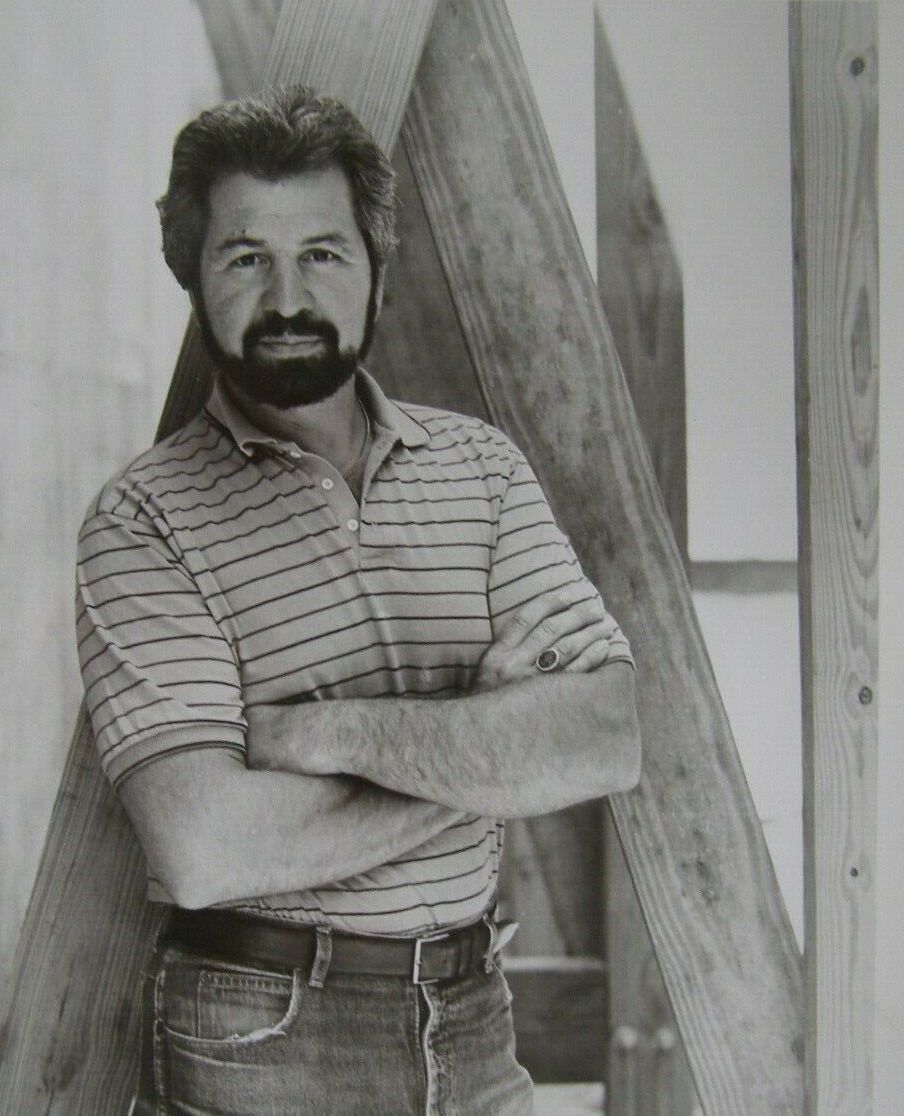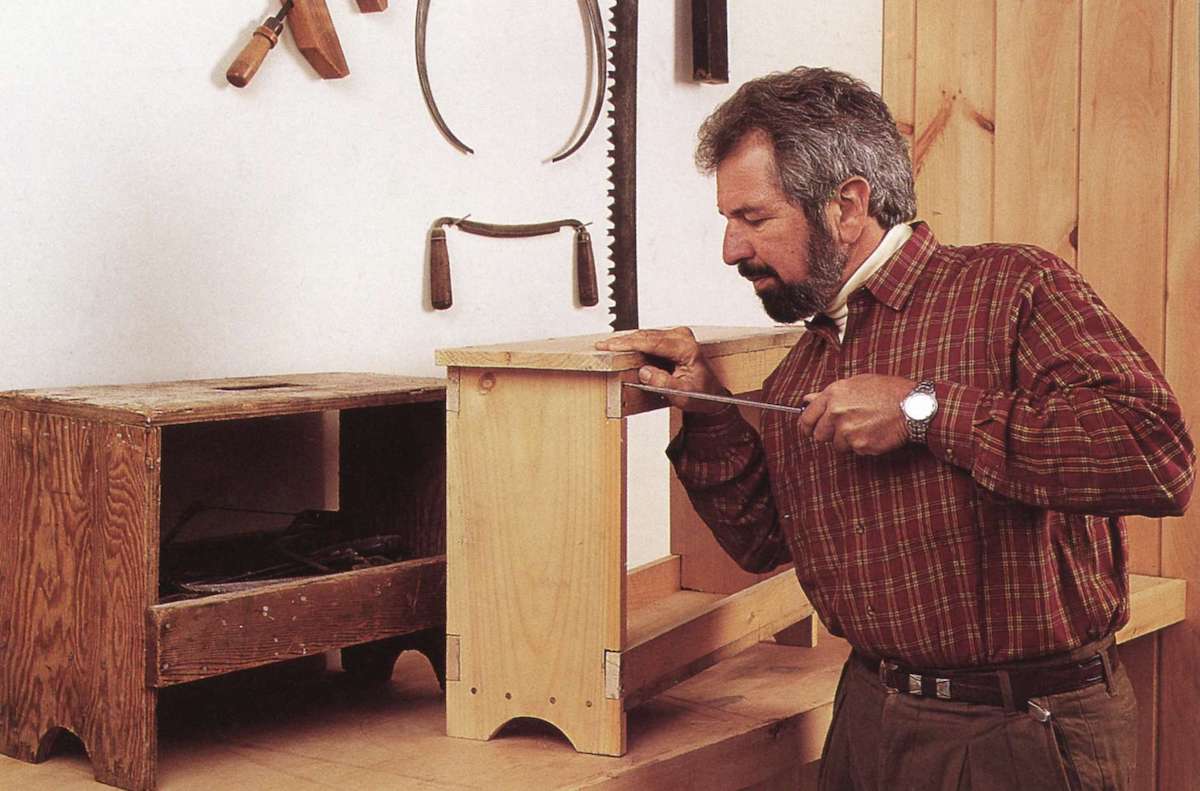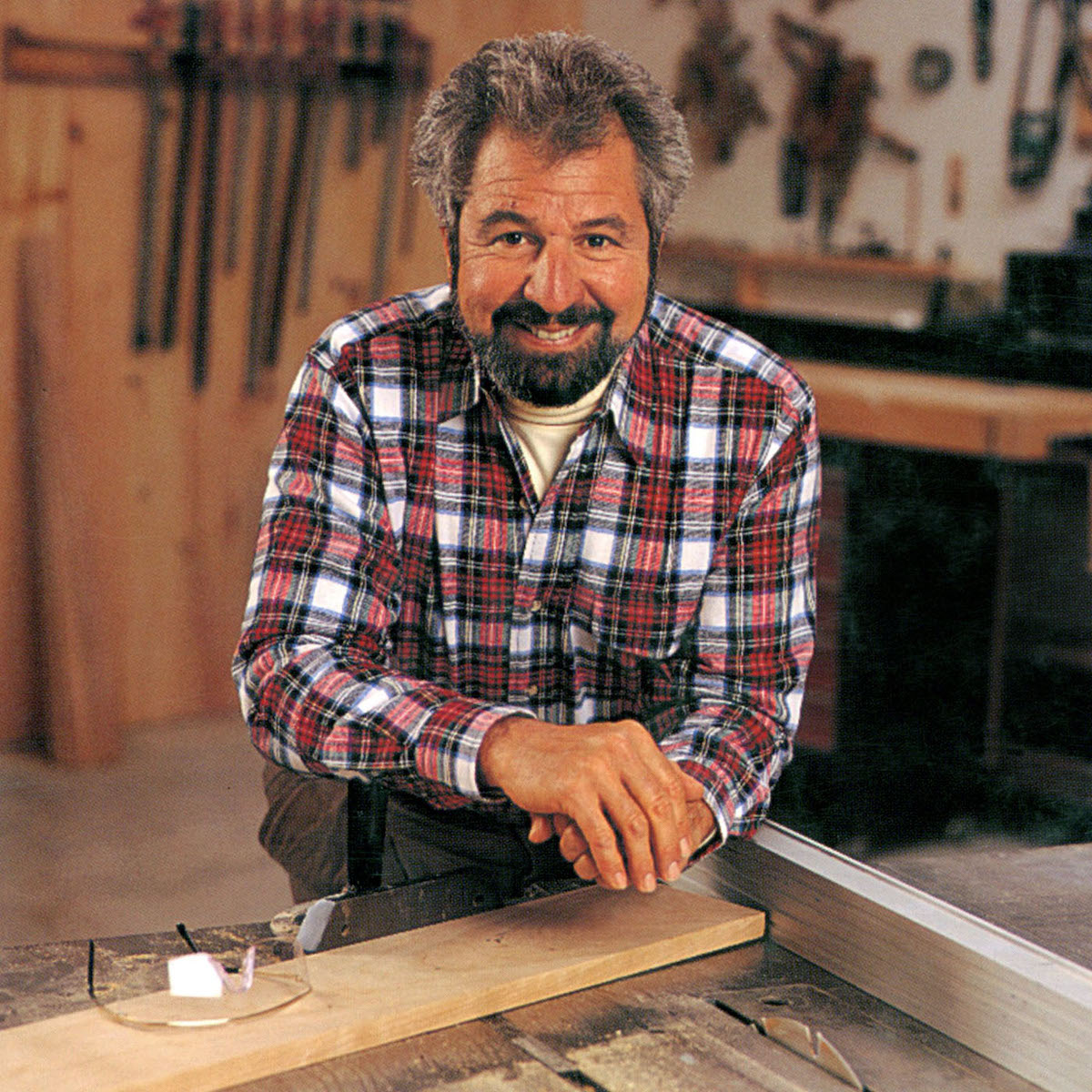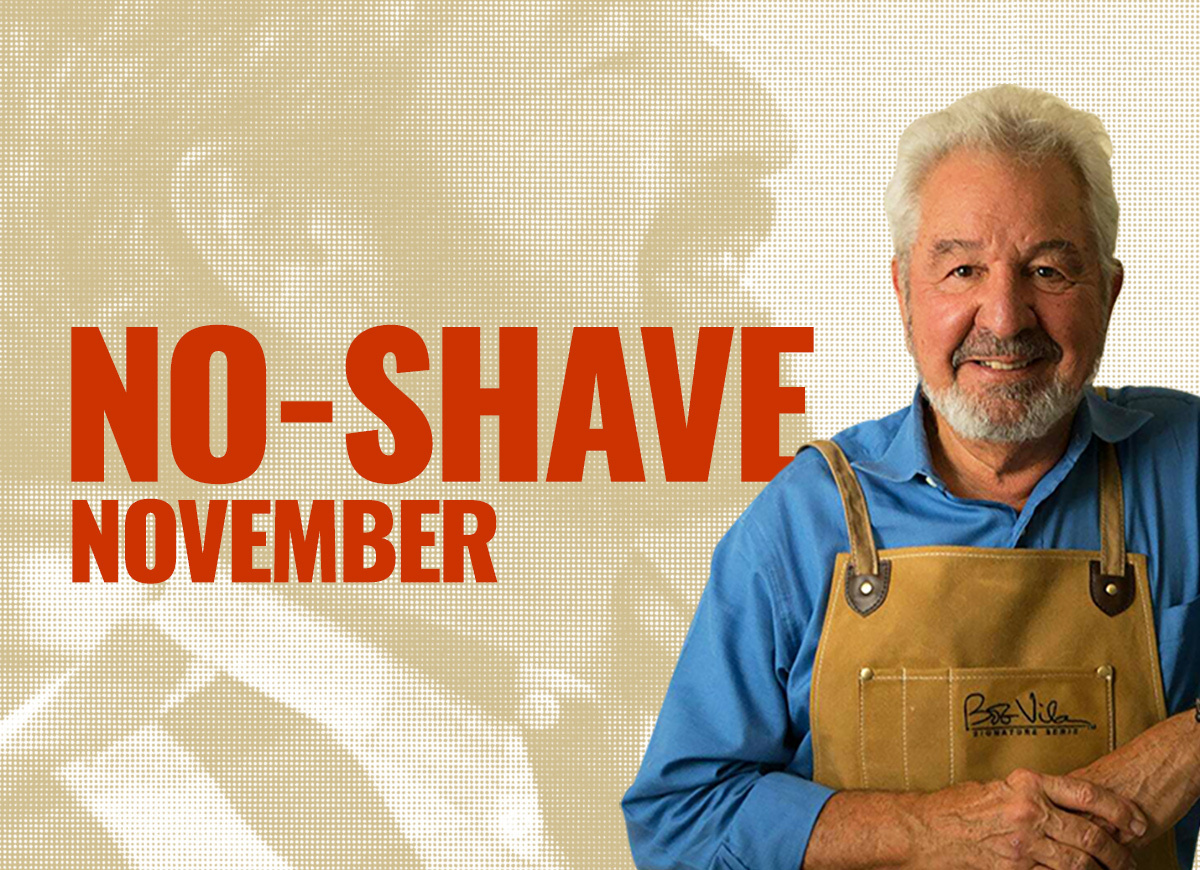We may earn revenue from the products available on this page and participate in affiliate programs. Learn More ›
Since 2009, No-Shave November has been an annual opportunity to raise awareness and funds to support nonprofits that research prostate, testicular, and colorectal cancers, and there may not be a more noble reason to roughen up and grow out those rugged whiskers.
No-Shave November is only a month long, but that doesn’t mean that men shouldn’t take their beard growth seriously year round. This guide on how to grow a beard reveals some important (and perhaps surprising) advice, much of which comes straight from the man behind the most famous beard in the DIY world: Bob Vila.
What is No-Shave November?
No-Shave November puts the caring, human spirit on full display, quite literally. It was founded in memory of Matthew Hill, a Chicago father who succumbed to colorectal cancer in 2007 after a yearlong battle with the disease. The movement’s goal is to raise funds for cancer research and prevention, by way of embracing hair—hair that so many cancer patients lose during potent treatments.
Since its inception, No-Shave November has raised millions of dollars for cancer research and prevention. Office pools that involve betting on whose beard will grow the longest or thickest, or who will be able to resist shaving their beards the longest, are wildly popular during the month. After all, what guy doesn’t relish a little competition, especially when it’s for a good cause?
Tools & Materials
Bobvila.com may earn a commission from purchases made through these links.
Before You Begin
Whether it’s simply for the 11th month of the year or the start of a new style, it’s important to have reasonable expectations for your beard. Every beard is different, and how each grows is unique to every face. Bald patches, swirly patterns, and gray hairs are normal, and while they might not make your beard look like our favorite DIY icon’s beard, they all have their place in the world. Be sure to temper your expectations and appreciate your beard however it grows.
For those wondering “how long does it take to grow a beard?,” the answer is: It depends. Some men can go from clean-shaven to full mountain man in just a few weeks, while it can take others months. If you’re looking for a secret recipe for how to grow a beard fast, you’ll be disappointed.

How to Grow a Beard
Obviously, No-Shave November is a great reason to learn how to grow a beard. For guys who often abandon the mission early, or for those who’ve simply never felt the wind rustling through their facial manes, however, the prospect might seem daunting. The following products and tips can help you get started, and continue the mission throughout the month.
Step 1: Start with a fresh shave.
In many cases, it is helpful for men learning how to start growing a beard to begin with a good, close shave. This will help prevent ingrown hairs and itchiness, and can limit potentially uneven growth, which is something most guys would prefer to avoid when going through the initial awkward phases of beard growth.
Visit a real-deal barber for this shave. Let them go the straight razor-and-hot-towel route to ensure that all of those little stubs are clean and ready to go for the next month or so.
RELATED: The Best Bathroom Mirrors
Step 2: Leave your beard alone, but treat it right.
After that initial cleanup, the best way to grow a beard is to leave it alone and let it grow. It may take a month or more for a beard to reach its real potential, and you’ll need to be patient in the meantime.
That doesn’t mean forgetting about your beard altogether. As is the case when planting a new vegetable garden, there are things you can do during the “growing season” to help promote beard growth. First, for most guys, the majority of beard growth occurs overnight, so it’s important to get plenty of rest. Also, overall health impacts beard growth, so be sure to eat well and exercise in order to achieve the best possible face mane.
Step 3: Understand that skincare is beard care.
Just like the homes Bob is so famous for building and fixing, a good beard requires a strong foundation. However, instead of concrete or fieldstone, we’re talking about skincare.
While a regular shampoo might seem to do the trick, it’s better to use a quality beard shampoo. Beard shampoos are less likely to dry out the skin underneath the stubble, potentially allowing for better hair growth and less itchiness.
Step 4: Mind your neck and cheek lines.
While the goal is to really let the beard go for a few weeks, it’s important to keep the neck and cheek lines clean. A bit of stubble on the cheeks and neck can make the early stages of beard growth seem more careless than mindful and deliberate.
- Cheek lines can be relatively easy to sculpt. Simply use a straightedge (a ruler works great here) and connect the corner of your mouth to the top of your ear. Everything above that line has to go, while everything underneath it can be left to grow.
- Determining the neckline is a bit more involved. First, figure out where the beard should end. Some guys like their beards to travel along their jawline and finish right under their chin, but more traditional beardsmen prefer their beards to stop one finger’s width above their Adam’s apple. Whatever your preference, imagine a U-shaped line drawn from just behind the jawbone, traveling along the end of the neckline, and back to the jawbone on the other side. Shave the hair below and behind that line and leave the rest to grow.

Step 5: Use your face shape as a guide.
As your beard is growing, notice how it is accentuating the shape of your face. If you have a rounder face, bushy sides might make you look too round, meaning it’s best to keep the sides shorter and leave a little extra length on the chin. If your face is long and oval, a little length on the sides with a more close-knit chin might be best.
Beards are great at enhancing the shape of the wearer’s face, so take some time to figure out how to best shape your beard before breaking out the trimmer.
Step 6: Trim your beard as needed.
Try to go as long as possible without trimming the beard. If you reach a point at which it is too raggedy and uneven for your taste, it may be time for your first trim.
First, brush your beard with a stiff-bristled brush to get everything organized and clean. If there are any standing flyaways, give them a snip with a pair of scissors. Also, style the mustache in whichever way is desired and snip off any hairs overhanging the lip. It’s best to cut these mustache hairs at an angle rather than horizontally as they’ll look more natural.
Next, attach a guard to an electric trimmer. If you’re not sure how long (or short) you’d like to keep your beard, start with a longer guard and work your way down. With slow, long strokes against the grain, trim the beard to length. Repeat this process every few weeks.
Note: The beard itself may determine the best length. Guys with exceedingly patchy beards may prefer to keep theirs short, while those with full, thick beards might find they do just fine with a longer cut.
Step 7: Follow a beard care regimen.
With that face foliage in full swing, it’s time to learn about beard care. Every guy develops their own routine, but the following regimen is a solid start.
- Wash daily with a quality beard shampoo.
- Shave the neck and cheek lines with a sharp razor and shaving cream. Rinse.
- Dab dry with a towel. Avoid scrubbing, as wet hair is highly susceptible to damage from friction.
- Apply a few drops of beard oil. Rub it into the beard with your fingers, ensuring that it reaches every hair.
- For longer beards, use a wide-toothed comb to detangle the hairs and distribute the oil.
- Allow the oil to dry for around 5 minutes before applying beard balm and combing it through the beard.
- Finally, brush the beard with a stiff bristle brush to style, and apply a bit of aftershave or cologne around the neck and cheek lines.
Bob Vila’s Best Beard-Growing Tips

Bob has been in the beard business for longer than many of us have been alive. Over the years, he’s come up with a trick or two to help budding beardsmen embrace their very own follicles. The following are some of Bob’s personal beard-growing tips and reflections for this No-Shave November and beyond.
- I first grew my beard in the late 1960s and, like many others of my generation, there was an aspect of political protest involved. Now, it’s part of who I am, and my media career has only reinforced that.
- Keeping my beard close-trimmed is important to me for both the look and personal comfort. Ultimately, I want to be noticed for being well-groomed and well-dressed, not the opposite.
- For daily care, I wash my face and beard with Dr. Bronner’s Pure-Castile Liquid Soap, use a stiff-bristle brush to keep whiskers looking right, and shave the neck area. If you like a close-trimmed beard, you need to keep the neck clean-shaven at all times to avoid looking sloppy.
- Every few days, I trim the mustache to keep whiskers from growing over the upper lip. As needed, I use a power trimmer to maintain the overall length. When I was young, I didn’t trim quite so often and I remember my late father-in-law telling me I’d never get ahead with all those whiskers. Proved him wrong, and neatness is a big part of that.
- I’ve always used Guerlain Imperiale eau de cologne after shaving and trimming. It’s what my dad and grandfather used—though both were clean-shaven—and it helps with hygiene.
FAQs
Q. What is the best method for measuring beard growth progress?
Measuring your beard growth progress to that of anyone else is a mistake. Take your time, be patient, and love your beard for how it is. In general, a beard won’t reach its full potential for around a month, so you just need to be patient through those early awkward phases.
Q. Should I wash my face before applying products for beard growth?
Yes, washing your face before applying any beard products is a good idea. Otherwise, sebum (the oil that keeps skin from drying out) can prevent optimal absorption or create a build-up that’s bad for both the hair and the skin underneath.
Q. Can trimming or shaping the beard promote faster growth?
Officially, the jury is out on this one. Some experts believe trimming does promote growth while others disagree. Whether trimming a beard does or doesn’t promote growth, it does leave thicker, blunter ends of the individual hairs, potentially helping a beard look fuller (albeit shorter). This could be a bit of a trick or illusion for how to grow a full beard.
Q. Can stress affect beard growth?
Yes, stress can affect beard growth. Stress produces cortisol, and this hormone can disrupt cell signaling and cyclic regulation of hair follicles. Both of these can result in slower hair growth or even patchiness.
Q. At what age does a beard grow fully?
Everyone is different. Full beard growth is possible in a man’s late teens and 20s, but it may not occur until they reach 30 years old.


